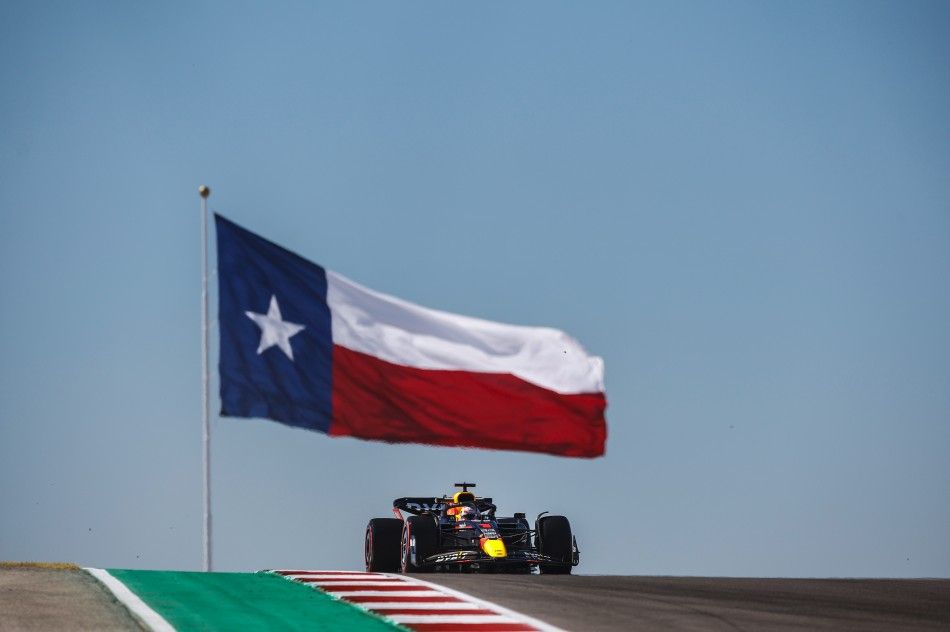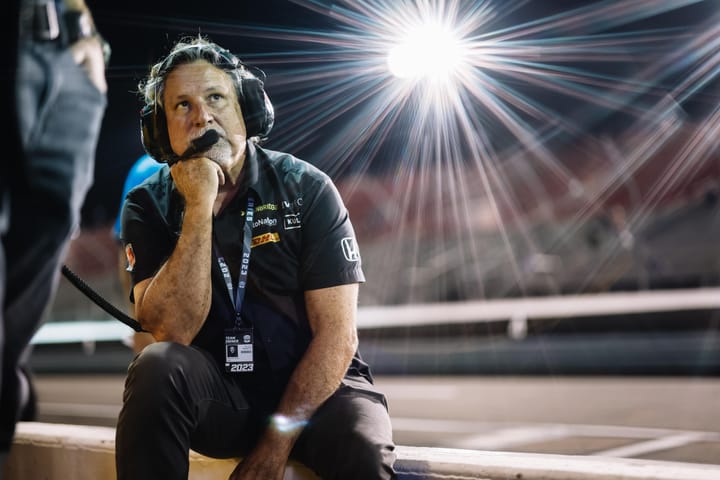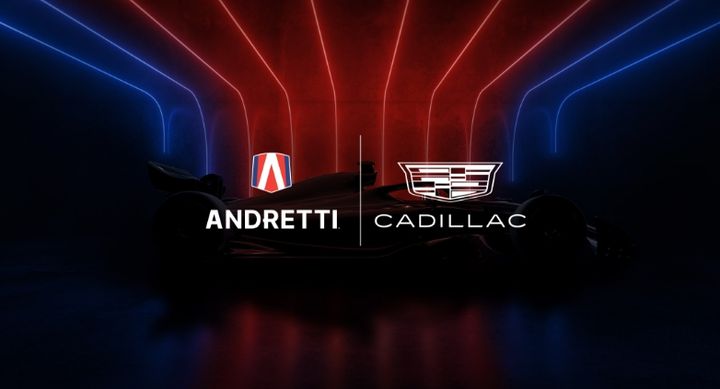Formula One is growing in the U.S. Is it a bubble waiting to pop?
Formula One's Drive to Survive docuseries is credited with starting an American F1 revival. The 2021 championship pushed it further. Is F1 creating a base of long-term loyal American fans, or is it a bubble that's waiting to pop?

Easily the most popular motorsport in the world, Formula One could never quite figure out the U.S. market. Stints at various street circuits, an eight-year run at the Indianapolis Motor Speedway road course and a move to a purpose-built circuit in Texas couldn't bring devoted American crowds to F1 for the longest time.
Now, that's not so much the case. Formula One has grown its fanbase in America and has rising TV ratings and attendance figures. Last month's U.S. Grand Prix had roughly 150,000 people on race day and over 400,000 spectators during the weekend — at least 120,000 more than in 2018.
Many attribute F1's U.S. revival to the Netflix-produced documentary series "Drive to Survive." Starting in March 2019, the docuseries highlighted Formula One behind the scenes and retold the events of the 2018 season with Hollywood flair. Sometimes that means there's a blurring of accuracy (misplaced radio bites, deceiving editing, etc.), but those concerns are secondary to the entertainment and appeal it creates.
DTS isn’t solely responsible for the growth, but it is a key part. The American motorsports series are more than aware of the impact DTS had on the market at-large. In fact, they want in on the action and are following a similar course.
NASCAR premiered its own docuseries, "Race for the Championship" last month. IndyCar has committed to a deal to have its own series with recording starting next season.
Each of the two American series has their motivations. NASCAR looks to capitalize on a new car, new schedule and new ideas now that its ratings and attendance slide has seemingly leveled out. IndyCar is eager to grow its fanbase in a similar way with growing interest among fans, investors and drivers from all levels of motorsport — including F1.
The tidbits in "Race for the Championship" are delightfully insightful, and I'm excited to see where IndyCar's series will end up. Both pull new eyeballs — or even bring back some old ones.
However, NASCAR and IndyCar should not count on a docuseries to create the same interest and growth F1 had with DTS. I'd argue Formula One's success is cresting, and looks more like a bubble that could pop by the end of their new U.S. media deal in 2025.
When you crunch the numbers, Formula One's growth on U.S. television is noticeable. However, it’s only grown to the extent that it is now level with IndyCar, and both are still a ways back from NASCAR's U.S. viewership figures.
When it comes to TV viewership trajectories over the last decade, NASCAR’s general downward trend now seems stable at worst and could swing upward, IndyCar seems to be past a valley and on a hillclimb, and Formula One is doubling some stats from five years ago, setting U.S. F1 TV records.
As a quick aside:
American fans, particularly those on social media, who care far too much about television ratings: Maybe it's a "popularity contest" kind of situation, but ratings are only as valuable as advertisers view them. How much money is one view worth? That, paired with the fact a lot of content is being consumed digitally via YouTube and social media today, means TV cannot and will not ever again paint a full picture of interest in sports.
A plethora of outside variables make ratings fluctuate dramatically, and they aren't a stable metric. For example, NASCAR's first race after the start of the COVID-19 cancellations at Darlington is the second-most viewed motorsports event outside of the Daytona 500 since 2017 (above). That's entirely an anomaly created by special circumstances that cannot be replicated again. By contrast, 2020 also had some of the lowest rated NASCAR races recorded on television this decade. Advertisers and sponsors are smart, and they know to see past outliers before putting money into a series: the thing that ultimately matters.
The facts? Of motorsports overall, the U.S. television floor is much higher than it was three years ago, which is a good thing. Formula One is the largest growing motorsports segment and is especially popular among 18 to 49 year-olds — a key marketing demographic.
How does all that indicate a bubble to me?
The higher ratings for the 2022 F1 season are driven by DTS and the 2021 Formula One season, which had a championship battle between Lewis Hamilton and Max Verstappen boiling down to the last race. It had drama, rivalry and a generational level of competition. That kind of F1 championship battle doesn't happen very often.
More often, Formula One resembles the 2022 season, where one to three drivers are truly competitive and everyone else plays an excruciating game of catchup until the rules change again.
The perfect storm of DTS and the 2021 drama generated a lot of interest in Formula One, but it all feels like betting on an internet stock in the year 2000. Something's going to burst, I fear. Formula One may grow its base some more on U.S. soil, but eventually, it is going to contract.
Besides, all the interest is astounding considering Formula One was never designed for American consumption. Looking at its DNA, it is a sport for wealthy Europeans, and when push comes to shove, many Americans, especially those that make less than a CEO's salary, are going to be kept at an arm's length.
F1 is going to race three times in America next year, which will tie a record for most time in one country in a season — the U.S. itself in 1982 and Italy in 2020. All three races are very expensive, not surprising as are most aspects of Formula One.
The lowest resale ticket prices for the 2023 Miami Grand Prix are over $500. The cheapest hotel rooms available today for next year's Las Vegas Grand Prix are over $700 — at least triple the price of the same weekend in 2022. Some packages will sell at the MGM Grand for over $100,000.
It's here I could say "you can get 10 tickets to the Indianapolis 500 for the same price," which is true, but it's not a great comparison honestly. The racing product will be better at Indianapolis, and by all accounts, it is the better overall experience, but there's a glitz-and-glamor appeal of Formula One that cannot be replicated by any other motorsports league on earth. It's hard to find a good comparison, but sometimes, it's the higher tax bracket that's the appeal itself.
Maybe, there are enough people who can maintain the expense enough for all these races. Who am I kidding? There are plenty of Americans willing to spend their millions on this next year. But does it have the same appeal in 2024? 2025? That's the long term question I have with Formula One in the U.S.
Is it possible I'm wrong? Yes!
The media deal I mentioned earlier guarantees national coverage of every F1 race without commercials through 2025 — something unparalleled in modern U.S. motorsports broadcasting. ESPN/ABC is even recruiting McLaren's Daniel Ricciardo to join an American-produced pre-race program. That's a big deal to generate loyal viewers. Ricciardo could bring in a few thousand alone, creating more fan investment in the series, and so on — he's that popular a figure.
I rather hope I am wrong. Formula One is better off having more American voices, and motorsports is better off having more viewers. "A rising tide floats all boats" absolutely applies here.
This isn't a red flag situation for F1 but more of a local yellow. DTS is still well-liked and well-watched, and Formula One in the U.S. might as well be a blank check for its organizing bodies right now.
However, all TV series get old after a while, and every year the 18-49 demographic has a smaller and smaller attention span.
With a few more duds of a championship and some ugly DTS controversies, Formula One might have to put out the Safety Car in the U.S.




Comments ()